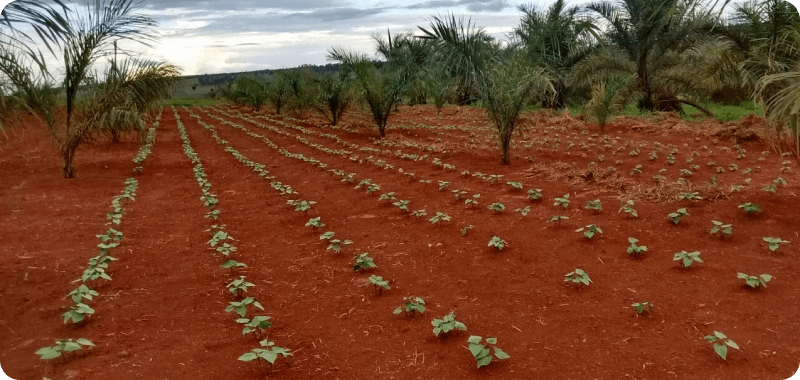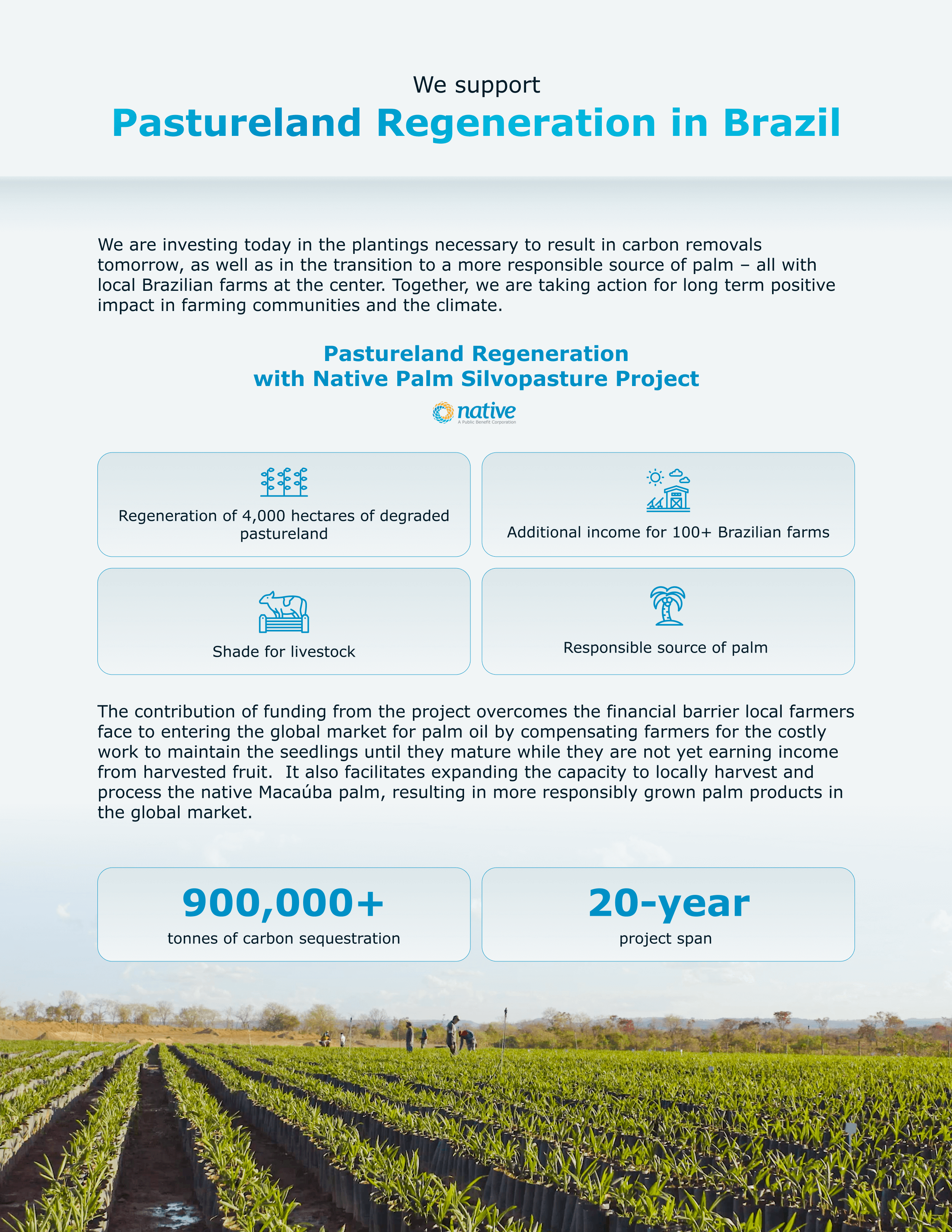Brazil Pastureland Regeneration
with Native Palm Silvopasture

An important part of your contribution to this carbon offset project is sharing what your support has helped achieve. We have built a repertoire of content to help you in doing so. All of the content provided below is authorized for media use.
Thank you for supporting this project and helping to catalyze new, lasting climate action.
Supporter Media Package Contents
Project Description
The Brazil Pastureland Regeneration with Native Palm Silvopasture Project works with smallholder farms in Brazil to plant native Macaúba palms in degraded pasturelands. This work will create a silvopasture system that sequesters carbon in the soil, provides shade for grazing livestock, and supports biodiversity, while providing a responsibly grown source of palm and additional income for 100+ farms.
Quotes About the Project
Use these quotes from our team and project partners to communicate how your contribution makes a difference.
Author: TBAQuotes are coming soon!
Author: TBAQuotes are coming soon!
Project Imagery
These images are authorized for media use.
Native palm seedlings sprout in a greenhouse that is a part of the Brazil Pastureland Regeneration Project

A farmer loosens the soil with a hoe to prepare the ground. The Macaúba palm is native to Brazil, and requires less than half the amount of water needed by the more common, non-native African palm grown in Brazil

Rows of crops, chosen by this farm, take root among Macaúba palms. There is opportunity for this type of intercropping in the first years while the Macaúba become established, and before grazing animals return to the pasturelands

An aerial view of young palm seedlings, planted to connect a segment of Atlantic forest in Vale do Paraiba, Brazil. Whenever possible, the plantings connect forest fragments to create ecological corridors that promote flux of genes through migration, dispersal, linkage, and interrelation of populations of wild flora and fauna, all of which are important to biodiversity

Macaúba seedlings in the nursery, maturing prior to planting. The seedlings will only find homes on degraded pasturelands, and only those that have not been deforested within, at least, the previous 10 years

More than 100 farms will participate in the Brazil Pastureland Regeneration with Native Palm Silvopasture Project

Silvopasture is the deliberate integration of trees and grazing livestock operations on the same land. Here, cows graze among palms in the project region

In collaboration, a farmer, a local technical assistant who supports farmers, and a colleague from Native round out the team discussing the project in the pasture. Teams will work closely from establishing the seedlings, reintroducing livestock, and harvesting the palm fruits

A partner demonstrates how palm fruits will be harvested. The seeds he collects will germinate in the lab and become seedlings for the next plantings. Collecting seeds from naturally occurring palms perpetuates diversity within the species

Participants in Brazil’s work program for the incarcerated (APAC) are employed to crack the Macaúba nuts, releasing the seed embryo which will germinate in a lab. The region offers a work program for the incarcerated as an opportunity to learn skilled work, technical training and on-the-job experience, while earning an income and reducing sentencing, with the aim to improve individuals’ reintegration into society

Macaúba palm fruits can be processed into pulp and kernel oil for cosmetics, soaps, cooking and biofuels, as well as pulp and kernel press cake for high-protein animal fodder

More Marketing Ideas
Find other outreach suggestions here. Our team is also available to discuss your ideas and how Native can help share your project support with your community.






Social Media Images
Use these social media images to communicate the impact of the project.